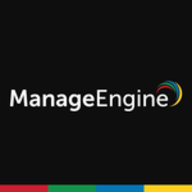

ManageEngine OpManager and Opsview are competing in the network management domain. ManageEngine OpManager generally has an advantage in pricing and support options, while Opsview's advanced features justify its higher cost for certain organizations.
Features: ManageEngine OpManager offers comprehensive network monitoring, advanced fault management, and network performance monitoring. Opsview provides integrated monitoring for hybrid IT environments, customizable dashboards, and advanced alerting options.
Room for Improvement: ManageEngine OpManager could expand its hybrid environment capabilities, enhance customization options, and improve integration with other tools. Opsview may benefit from simplifying initial setup, reducing its complexity for smaller networks, and offering more straightforward pricing plans.
Ease of Deployment and Customer Service: ManageEngine OpManager is known for its straightforward deployment and responsive customer service. Opsview, while offering a flexible deployment model for varied network environments, can have a more complex setup process.
Pricing and ROI: ManageEngine OpManager offers competitive pricing with quick ROI due to lower setup costs. Opsview commands a higher price but provides significant ROI for businesses needing customizable monitoring solutions.
However, from a sales perspective, it's very challenging for the initial sale, and even renewals are tough when it comes to the price point.
I would give nine points out of ten for ManageEngine OpManager's technical support.
The rating for support would be six out of ten for ManageEngine OpManager.
More support is needed, especially on weekends.
Scalability is needed more in automation and AI functionalities.
If identifying the interface was easier, it would take less time to configure.
There is a call for ManageEngine OpManager to scale better in automation and AI functionality.
Improving the after-sales support and learning materials for local engineers and partners to enhance their capacities and expertise.
Grafana does have features that I think my current solution lacks, such as better performance reporting.
The cost is quite high-end for ManageEngine OpManager, especially in our very price-sensitive market here in Sri Lanka.
Pricing for ManageEngine OpManager is good and negotiable with the distributor;
The automated reporting back, which includes identifying the top list and trends, as well as session monitoring from the end user to server through routers and firewalls, provides exact issue notifications for network problems.
The biggest benefit of ManageEngine OpManager for our customers is centrally managing the users and assets of an organization, along with link management, bandwidth management, and similar functionalities.
The dashboard is unique and user-friendly.
Opsview's alerting capabilities are very helpful, and they positively impact our incident response times.
| Product | Market Share (%) |
|---|---|
| ManageEngine OpManager | 1.5% |
| Opsview | 0.6% |
| Other | 97.9% |

| Company Size | Count |
|---|---|
| Small Business | 16 |
| Midsize Enterprise | 15 |
| Large Enterprise | 27 |
| Company Size | Count |
|---|---|
| Small Business | 12 |
| Midsize Enterprise | 5 |
| Large Enterprise | 9 |
ManageEngine OpManager is a network, server, and virtualization monitoring software that helps SMEs, large enterprises and service providers manage their data centers and IT infrastructure efficiently and cost effectively. Automated workflows, intelligent alerting engines, configurable discovery rules, and extendable templates enable IT teams to setup a 24x7 monitoring system within hours of installation.
Opsview is a modern and scalable SaaS or on-premise monitoring solution that gives your organization full visibility into on-premises and cloud IT infrastructure. It delivers simplified management and a single pane of glass view of your entire IT operations. The solution provides unified insight into dynamic IT operations on premises, in the cloud, or hybrid. Additionally, it can be used either in agent-based or agentless configurations.
You can use Opsview to monitor:
Operating systems
Networks
Cloud
VMs
Containers
Databases
Applications
Opsview Features
Opsview comes with an array of features, including:
AutoMonitor express scan: This feature makes it easy for you to keep up with your
changing IT infrastructure by helping you find new Windows, VMware, and Azure hosts.
Business service monitoring: This enables you to see the health of all your end-to-end
business services in real time and in one place.
Autodiscovery: With this feature you can automatically discover and profile hosts in your environment, which helps you quickly populate information into Opsview for monitoring.
Network analyzer: Opsview provides you with a complete picture of your company's
network infrastructure via its Network Topology, Flow Collector, & NetAudit modules.
Customizable dashboards: Opsview dashboards give you a view of all your monitoring
metrics in interactive dashboards that are easy to create and maintain.
Customizable reports: With Opsview, reports connect to the Opsview Data Warehouse and present historical data collected by Opsview. The solution’s out-of-the-box reports include performance, SLA, and events.
Disaster recovery: Opsview gives your organization peace of mind with its disaster
recovery by restoring your Opsview system if needed.
Event handlers: Opsview event handlers allow for automation and proactive monitoring so that your users are not impacted.
Events viewer: The events viewer feature helps you easily see all the important events in your Opsview system.
High availability server: Opsview has a high availability monitor that offers protection to ensure that you never lose IT infrastructure visibility.
Multitenancy: Multitenancy makes it possible for your MSP to give control of Opsview to your end users. It also allows you to create new hosts and roles as well as users while using a secure, private environment.
Log analytics: This feature allows you to improve logging visibility, reporting, correlation, and alerting.
SNMP traps: With SNMP traps, you can reduce your network and server load and provide faster service to your customers.
Opsview Benefits
There are many benefits to implementing Opsview. Some of the biggest advantages the
solution offers include:
Extensible: Opsview can be used in agent-based or agentless configurations. In addition, it can sit above multiple monitoring tools, aggregating information into a single pane of glass.
Scalable: Opsview is very scalable. It can easily scale beyond 10,000 monitored devices via its distributed model that spreads monitoring across many monitoring engines. Its databases may be located on dedicated servers to further distribute load.
Functional overview: Opsview monitors your IT infrastructure, network and applications, and displays alerts. It is also designed to generate notifications and integrate with your other service management tools.
Flexible: Opsview has a flexible web framework, allowing dashboards and monitoring views to be easily customized and extended.
Integration: Easily integrate Opsview Cloud with your current operational tools, including help desks, service management, automation and notification tools
Automation: Automate the configuration and operation of your IT monitoring system using Opsview’s intrinsic automation capabilities. Allowing you to spend more time on projects that drive your business.
Opsview Cloud
Opsview Cloud gives your business 24/7 Saas Monitoring for your entire IT estate. Benefits include:
Reducing your infrastructure costs
Realigning your resources to focus on business value IT projects
Ensuring you have 24/7 monitoring
Utilizing Opsview experts to provide monitoring best practices/tips and tricks
We monitor all Network Monitoring Software reviews to prevent fraudulent reviews and keep review quality high. We do not post reviews by company employees or direct competitors. We validate each review for authenticity via cross-reference with LinkedIn, and personal follow-up with the reviewer when necessary.